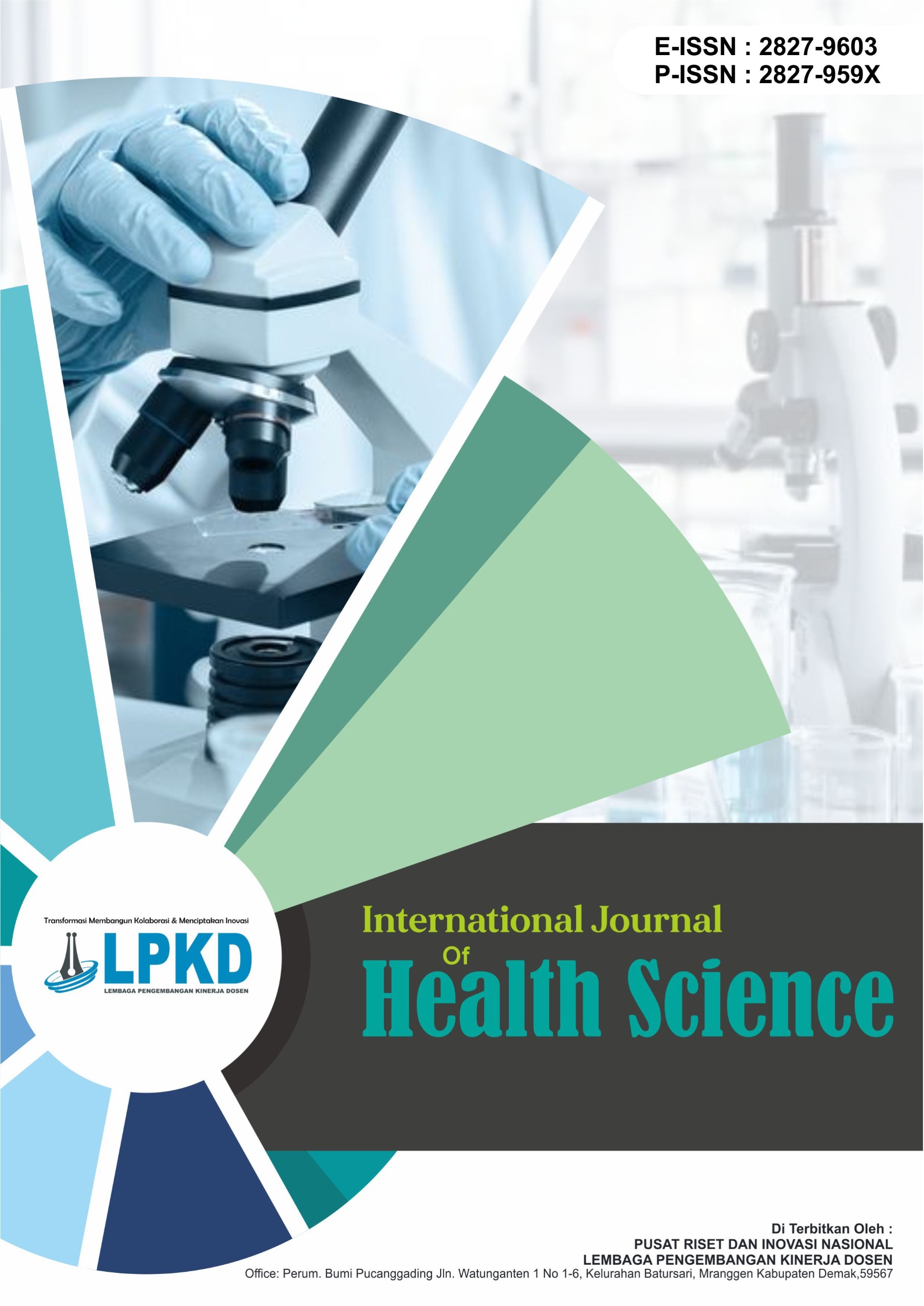Smoking Prevention in Indonesian Schools: Policy Opportunities in the Perspective of the Kingdons Multiple Streams Framework
DOI:
https://doi.org/10.55606/ijhs.v5i3.6168Keywords:
Kingdon's Multiple Streams Framework, Political Commitment, School-Aged Children, Smoking Prevention Policy, Tobacco IndustryAbstract
The prevalence of smoking among children and adolescents (school age) in Indonesia continues to increase, even though there have been various regulations such as Permendikbud No. 64 of 2015 and PP 109 of 2012. This fact indicates that schools are not yet able to become a safe and free environment from cigarette exposure. This study aims to analyze the dynamics of school-age smoking prevention policies using the Kingdon's Multiple Streams Framework (MSF), which identifies three major currents in policy: problem, policy, and politics. Through an integrative literature review approach to various scientific sources and policies for the 2021–2025 period, this study found that problem and policy streams have been relatively strong, but political streams are still weak. The lack of political commitment, the strong influence of the cigarette industry, and the lack of ratification of the FCTC are the main obstacles to the opening of the policy window. The proposed strategy includes a softening up approach with a focus on preventing smoking in schools as a form of protecting the future generation of the nation, as well as coupling focusing events by utilizing viral events to suppress public opinion and policymakers. The role of policy entrepreneurs from academics, teachers, NGOs, and educational and health institutions is very crucial in uniting the three policy streams. This study encourages the birth of new policies that are more specific, evidence-based, and sustainable in protecting school children from the dangers of smoking.
Downloads
References
Ahsan, A., Rahmayanti, K. P., Amalia, N., Veruswati, M., Prabandari, Y. S., Martini, S., Yuniar, A. M., Utami, M. G., & Diniary, A. (2024). Evaluation of tobacco tax funding to eradicate illicit cigarettes in Indonesia: A qualitative approach. Asian Pacific Journal of Cancer Prevention, 25(8), 2885–2893. https://doi.org/10.31557/APJCP.2024.25.8.2885
Amalia, B., Astuti, P. A. S., & Cohen, J. E. (2024). Five years of discourse related to Indonesia tobacco control reform: A content analysis of online media coverage. Tobacco Control, 1–8. https://doi.org/10.1136/tc-2024-058661
Amelia, E. L., & Adnan, N. (2025). Implementation of smoke-free zones in schools in Indonesia. Journal of Social Research, 4(5), 662–670. https://doi.org/10.55324/josr.v4i5.2525
Astuti, P. A. S. (2023). Policy incoherence and unwillingness of the Indonesian government to curb its alarming tobacco epidemic. Tobacco Control, 32(4), 405–406. https://doi.org/10.1136/tc-2023-058114
Astuti, P. A. S., Assunta, M., & Freeman, B. (2020). Why is tobacco control progress in Indonesia stalled? A qualitative analysis of interviews with tobacco control experts. BMC Public Health, 20(1), 1–12. https://doi.org/10.1186/s12889-020-08640-6
Asyary, A., Veruswati, M., Arianie, C. P., Diah Ratih, T. S., & Hamzah, A. (2021). Prevalence of smoke-free zone compliance among schools in Indonesia: A nationwide representative survey. Asian Pacific Journal of Cancer Prevention, 22(2), 359–363. https://doi.org/10.31557/APJCP.2021.22.2.359
Ba-Break, M., Bewick, B., Huss, R., Ensor, T., Abahussin, A., Alhakimi, H., & Elsey, H. (2023). Systematic review of intervention functions, theoretical constructs and cultural adaptations of school-based smoking prevention interventions in low-income and middle-income countries. BMJ Open, 13(2), e066613. https://doi.org/10.1136/bmjopen-2022-066613
Banks, E., Joshy, G., Weber, M. F., Liu, B., Grenfell, R., Egger, S., Paige, E., Lopez, A. D., Sitas, F., & Beral, V. (2015). Tobacco smoking and all-cause mortality in a large Australian cohort study: Findings from a mature epidemic with current low smoking prevalence. BMC Medicine, 13(1), 1–10. https://doi.org/10.1186/s12916-015-0281-z
Bella, A., Swarnata, A., Vulovic, V., Nugroho, D., Meilissa, Y., Usman, U., & Dartanto, T. (2024). Macroeconomic impact of tobacco taxation in Indonesia. Tobacco Control, 33(Suppl 1), S108–S114. https://doi.org/10.1136/tc-2022-057735
Bethelhem, A., Wang, W., Meseret, A. C., Amsalu, K. A., Cai, B., & Fang, S. (2024). Applying Kingdon’s multiple streams framework to understand health policy processes: A systematic review. Academic Journal of Politics and Public Administration, 1(5), 1–4. https://doi.org/10.19080/ACJPP.2024.01.555575
Brown, J. L., Rosen, D., Carmona, M. G., Parra, N., Hurley, M., & Cohen, J. E. (2023). Spinning a global web: Tactics used by Big Tobacco to attract children at tobacco points-of-sale. Tobacco Control, 32(5), 645–651. https://doi.org/10.1136/tobaccocontrol-2021-057095
Doll, R., Peto, R., Boreham, J., & Sutherland, I. (2004). Mortality in relation to smoking: 50 years’ observations on male British doctors. British Medical Journal, 328(7455), 1519–1528. https://doi.org/10.1136/bmj.38142.554479.ae
England, L. J., Bunnell, R. E., Pechacek, T. F., Tong, V. T., & McAfee, T. A. (2015). Nicotine and the developing human: A neglected element in the electronic cigarette debate. American Journal of Preventive Medicine, 49(2), 286–293. https://doi.org/10.1016/j.amepre.2015.01.015
Fajrin, F. W., Larasati, K. K., & Jamaluddin, F. (2025). Legal political inconsistencies in the ratification of international treaties in Indonesia. Legal Treatise, 21(1), 62–77. https://doi.org/10.30872/risalah.v21.i1.1819
Gianfredi, V., Barbati, C., Sgueglia, A. C., Bertuccio, P., Traverso, L., & Odone, A. (2025). Digital interventions in tobacco prevention for school-aged children: Results of a systematic review. Public Health, 245, 105799. https://doi.org/10.1016/j.puhe.2025.105799
Goodchild, M., Nargis, N., & D’Espaignet, E. T. (2018). Global economic cost of smoking-attributable diseases. Tobacco Control, 27(1), 58–64. https://doi.org/10.1136/tobaccocontrol-2016-053305
Gunawan, R., Maya, D., Siregar, S., Syaiful, D., Shufyani, F., & Vera, Y. (2022). The effectiveness of social media in improving the behavior of health students in the prevention of COVID-19. Journal of Health Education, 10(12), 33–40.
Kingdon, J. W. (2010). Agendas, alternatives, and public policies (Updated ed., with an epilogue on health care). Longman. http://www.amazon.co.uk/Alternatives-Policies-Epilogue-Classics-Political/dp/020500086X
Kramer, E., Masduki, M., Rosemary, R., Maryani, E., Nurhajati, L., & Redjeki, A. M. S. (2023). How do national laws filter down to the local? Tobacco control regulations and smoke-free areas in a decentralised Indonesia. Journal of Current Southeast Asian Affairs, 42(2), 216–241. https://doi.org/10.1177/18681034231185159
Liu, Y., Rao, K., Hu, T. W., Sun, Q., & Mao, Z. (2006). Cigarette smoking and poverty in China. Social Science & Medicine, 63(11), 2784–2790. https://doi.org/10.1016/j.socscimed.2006.06.019
Lu, W., Aarsand, R., Schotte, K., Han, J., Lebedeva, E., Tsoy, E., Maglakelidze, N., Soriano, J. B., Bill, W., Halpin, D. M. G., Rivera, M. P., Fong, K. M., Kathuria, H., Yorgancıoğlu, A., Gappa, M., Lam, D. C. L., Rylance, S., & Sohal, S. S. (2024). Tobacco and COPD: Presenting the World Health Organization (WHO) tobacco knowledge summary. Respiratory Research, 25(1), 1–10. https://doi.org/10.1186/s12931-024-02961-5
Maharani, A., Sujarwoto, Praveen, D., Oceandy, D., Tampubolon, G., & Patel, A. (2019). Cardiovascular disease risk factor prevalence and estimated 10-year cardiovascular risk scores in Indonesia: The SMARThealth Extend study. PLOS ONE, 14(4), e0215219. https://doi.org/10.1371/journal.pone.0215219
Ministry of Health. (2018). Basic health research in 2018 (p. 156). Balitbangkes Publishing Board.
Ministry of Health. (2023). Indonesian health survey 2023 (SKI) (p. 235). Ministry of Health.
News, B. (2025). Viral photo of students smoking next to teachers, Makassar education district intervenes. BBC News Indonesia, 1–2.
Ode Masrida, W., Kristina, S. A., & Wiedyaningsih, C. (2021). Estimating premature mortality cost of cancer related to tobacco smoking in Indonesia. Pharmaceutical Magazine, 17(2), 182–186. https://doi.org/10.22146/farmaseutik.v17i2.49780
Paksi, A. K., Prasetyoningsih, N., & Sugiyo, D. (2019). Tobacco control politics in Indonesia: Regional and global perspective. Nation State Journal of International Studies, 2(2), 187–209. https://doi.org/10.24076/nsjis.2019v2i2.166
Pan, B., Jin, X., Jun, L., Qiu, S., Zheng, Q., & Pan, M. (2019). The relationship between smoking and stroke: A meta-analysis. Medicine, 98(12), e14872. https://doi.org/10.1097/MD.0000000000014872
Paramita, A., Indrawati, L., Izza, N., Tjandrarini, D. H., Andarwati, P., Nantabah, Z. K., Malakauseya, M. L. V., Rialine, C., & Titaley. (2020). Passive smoking is strongly associated with heart disease in hypertensive workers: Analysis of the 2018 Indonesia Basic Health Research. Social Health and Behavior, 37–43. https://doi.org/10.4103/shb.shb_271_23
Reimold, A. E., Lee, J. G. L., & Ribisl, K. M. (2023). Tobacco company agreements with tobacco retailers for price discounts and prime placement of products and advertising: A scoping review. Tobacco Control, 32(5), 635–644. https://doi.org/10.1136/tobaccocontrol-2021-057026
Ridwan, M., Syukri, M., Solida, A., Kalsum, U., & Ahsan, A. (2023). Assessing the policy of non-smoking areas in schools in Indonesia: A mixed methods study. Asian Pacific Journal of Cancer Prevention, 24(10), 3411–3417. https://doi.org/10.31557/APJCP.2023.24.10.3411
Russell, C. L. (2005). An overview of the integrative research review. Progress in Transplantation, 15(1), 8–13. https://doi.org/10.1177/152692480501500102
Septiono, W., Kuipers, M. A. G., Ng, N., & Kunst, A. E. (2022). Self-reported exposure of Indonesian adolescents to online and offline tobacco advertising, promotion and sponsorship (TAPS). Tobacco Control, 31(1), 98–105. https://doi.org/10.1136/tobaccocontrol-2020-056080
Triyana, M., & White, J. S. (2022). Non-monetary incentives for tobacco prevention among youth in Indonesia. Journal of Health Economics, 83, 102620. https://doi.org/10.1016/j.jhealeco.2022.102620
Vynckier, P., Schmidt, M., Nayani, S., Guariguata, L., Devleesschauwer, B., & Verhaeghe, N. (2025). The economic burden of smoking in Belgium: Incremental healthcare costs and lost productivity. European Journal of Public Health, 35(1), 108–113. https://doi.org/10.1093/eurpub/ckae211
World Health Organization. (2025). WHO report on the global tobacco epidemic, 2025: Warning about the dangers of tobacco. WHO.
Yunarman, S., Munandar, A., Ahsan, A., Akbarjono, A., & Kusuma, D. (2021). Opportunities and challenges of tobacco control policy at district level in Indonesia: A qualitative analysis. Asian Pacific Journal of Cancer Prevention, 22(10), 3055–3060. https://doi.org/10.31557/APJCP.2021.22.10.3055
Downloads
Published
How to Cite
Issue
Section
License
Copyright (c) 2025 International Journal Of Health Science

This work is licensed under a Creative Commons Attribution-ShareAlike 4.0 International License.







